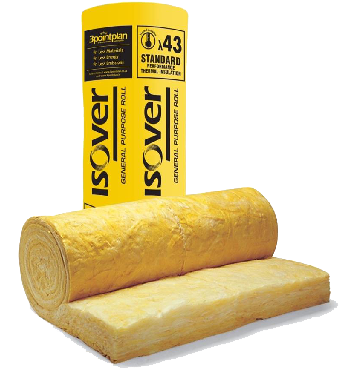Loft Insulation
If your loft is not insulated did you know that a quarter of your heat is lost through the roof.
If your loft is not insulated did you know that a quarter of your heat is lost through the roof. Having UK Energy Saving Experts insulate your loft, attic or roof space is a simple way to effectively save the wasted heat loss and reduce your heating bills.
UK Energy Saving Experts install loft insulation up to the recommended thickness of 270mm, the benefits of this thickness being installed are well documented with a possible saving of £250 on your utilities bill. Properties in Preston and all over the UK may already have loft insulation but this is quite possibly only 100mm thick, it is worth checking or calling us to discuss further.
About 35% of all heat loss from UK homes takes place through external walls. Most homes built after 1920 have twin exterior walls with a narrow cavity between them.
If your attic is accessed by a fixed staircase (not a ladder) and you have an attic room or dormer roof then you could benefit from Room in roof insulation. Many attic conversions were constructed with little or no insulation applied to the walls and voids. Loft insulation, Cavity wall and Room in Roof insulation can all be applied for using the same application form.
Loft Insulation
If your loft is not insulated did you know that a quarter of your heat is lost through the roof.
If your loft is not insulated did you know that a quarter of your heat is lost through the roof. Having UK Energy Saving Experts insulate your loft, attic or roof space is a simple way to effectively save the wasted heat loss and reduce your heating bills.
UK Energy Saving Experts install loft insulation up to the recommended thickness of 270mm, the benefits of this thickness being installed are well documented with a possible saving of £250 on your utilities bill. Properties in Preston and all over the UK may already have loft insulation but this is quite possibly only 100mm thick, it is worth checking or calling us to discuss further.
About 35% of all heat loss from UK homes takes place through external walls. Most homes built after 1920 have twin exterior walls with a narrow cavity between them.
If your attic is accessed by a fixed staircase (not a ladder) and you have an attic room or dormer roof then you could benefit from Room in roof insulation. Many attic conversions were constructed with little or no insulation applied to the walls and voids. Loft insulation, Cavity wall and Room in Roof insulation can all be applied for using the same application form.
Underfloor Insulation
Help prevent drafts.
Insulating a floor means adding an insulating material beneath the floorboards, thereby reducing heat escaping through the floor into the ground. Approximately 15% of heat is lost from a house via this route. Insulation also acts to prevent draughts coming up through the floorboards.
Room In Roof Insulation
Insulate your loft room.
Room in Roof (RIR) is an ideal product if you have a loft living space which is not insulated, or you are looking to convert your loft into a room. Insulating boards are fitted in between the rafters, underneath the plasterboard.
Solid Wall Insulation
There have been over a million homes built in the UK with solid walls.
Properties with this wall type are not very efficient at keeping heat in. It’s confirmed that a third of the heat in your property escapes through your walls. This is where the ECO scheme can help. If your property has solid walls and you are on a qualifying benefit, then you can have your property insulated with internal wall insulation.
The process involves securing insulation boards to the inside of your home. This will then be covered with plasterboard and the walls will be re-skimmed.
With the new look, internal wall insulation can also add value to your home, make it more soundproof and help protect it from damp.
Installing internal wall insulation can be an expensive process, but a high amount of the cost can be covered with funding. Not only homeowners can take advantage of this measure the government has confirmed tenants can have their rented properties insulated. Please complete our form to see if you qualify.
Solid Wall Insulation
There have been over a million homes built in the UK with solid walls.
Properties with this wall type are not very efficient at keeping heat in. It’s confirmed that a third of the heat in your property escapes through your walls. This is where the ECO scheme can help. If your property has solid walls and you are on a qualifying benefit, then you can have your property insulated with internal wall insulation.
The process involves securing insulation boards to the inside of your home. This will then be covered with plasterboard and the walls will be re-skimmed.
With the new look, internal wall insulation can also add value to your home, make it more soundproof and help protect it from damp.
Installing internal wall insulation can be an expensive process, but a high amount of the cost can be covered with funding. Not only homeowners can take advantage of this measure the government has confirmed tenants can have their rented properties insulated. Please complete our form to see if you qualify.

HHCRO
Affordable Warmth Obligation
HHCRO provides heating and insulation grants to homeowners and tenants who receive certain benefits. Grants are means tested and will depend on several factors.
The main aim is to ensure that the heat is generated as efficiently as possible and this heat is then prevented from escaping the property.
